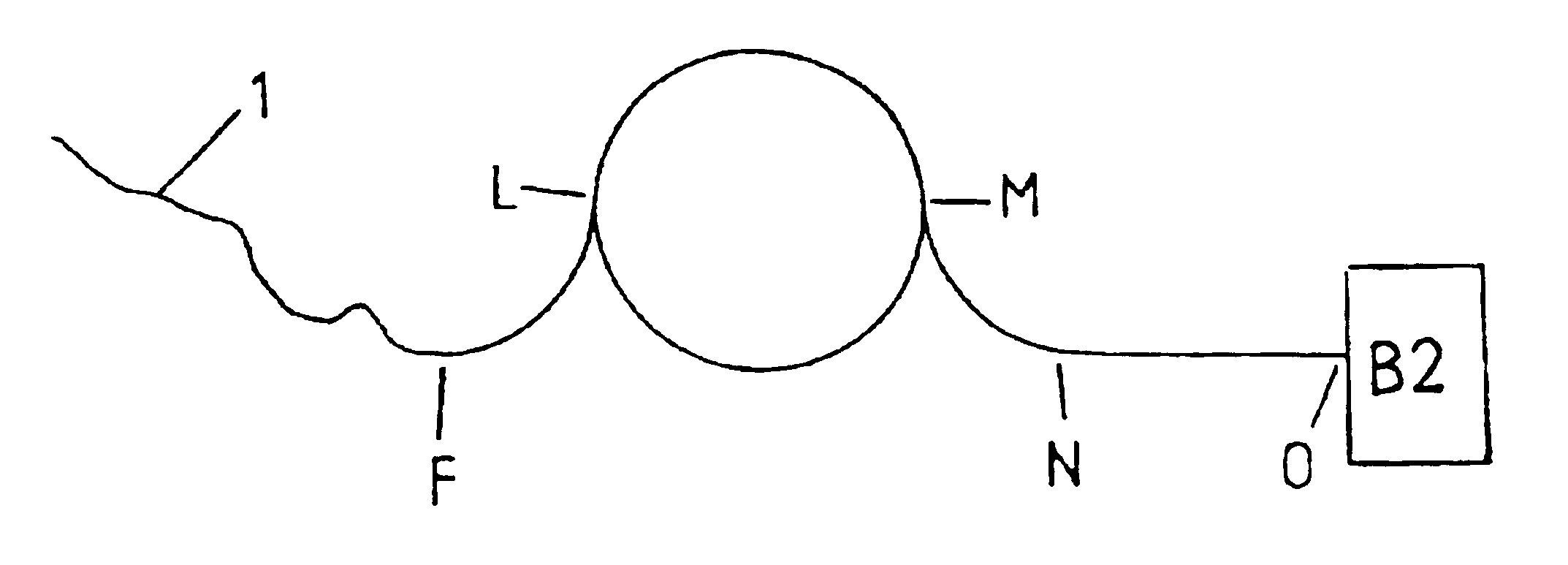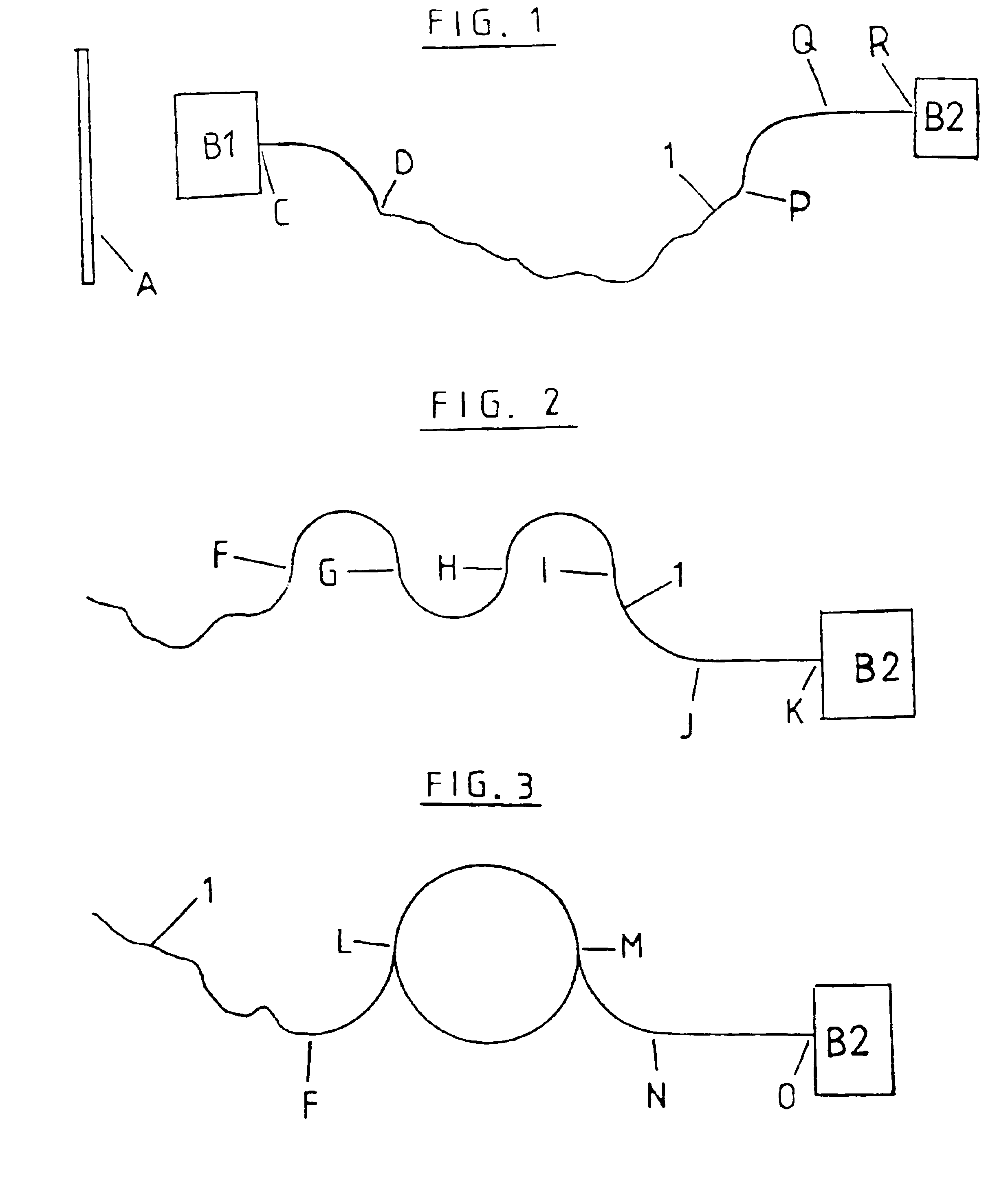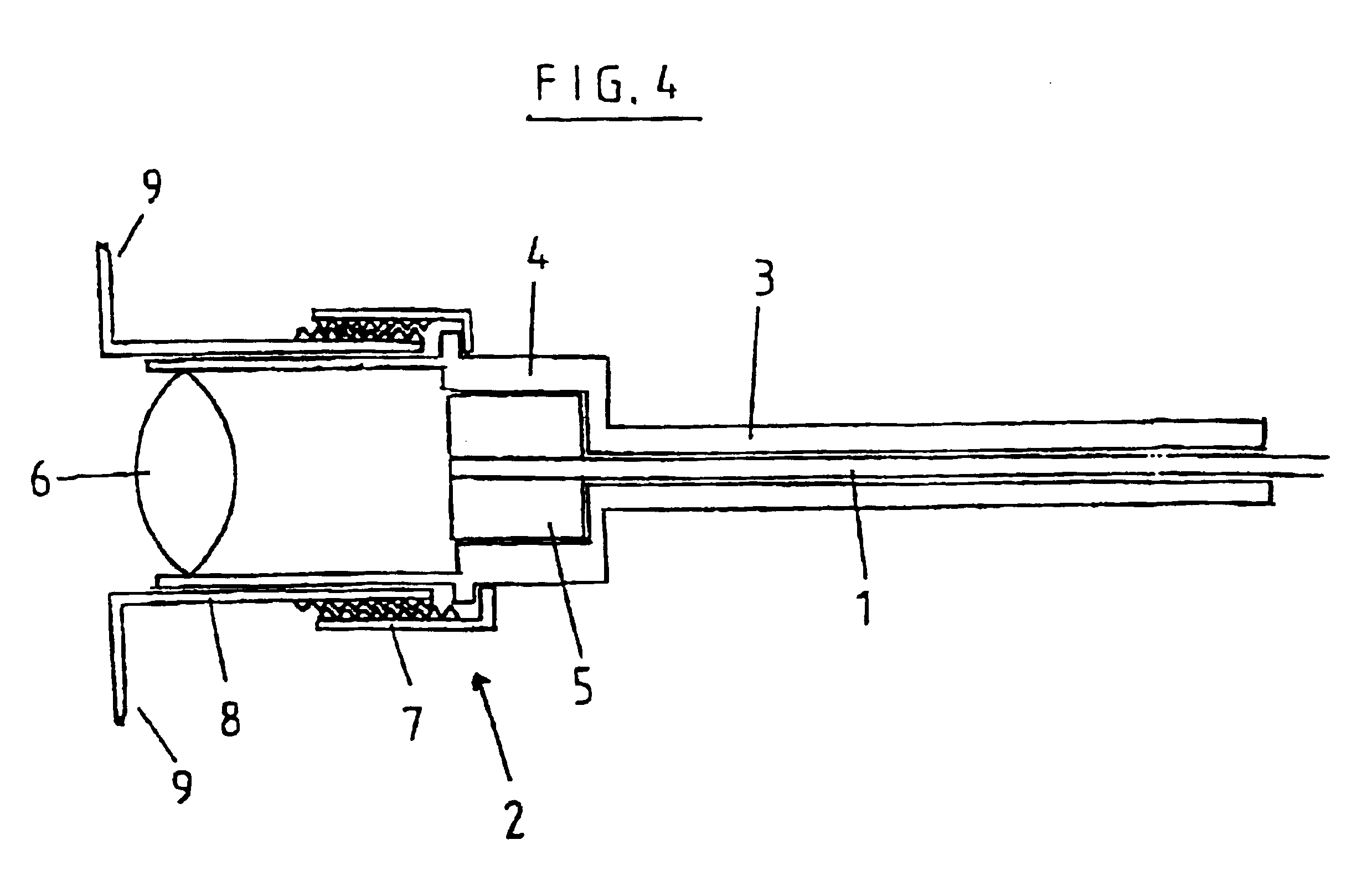Device and method for transmitting light over an optical fiber
- Summary
- Abstract
- Description
- Claims
- Application Information
AI Technical Summary
Benefits of technology
Problems solved by technology
Method used
Image
Examples
first embodiment
[0049]FIG. 1 shows a first embodiment for attachment of a reinforcing means in combination with a guidance means according to a first configuration for rigid or curved guidance of subsegments of a thick core fiber 1 in fiber output region, and a reinforcing means for rigid guidance of a further subsegment of thick core fiber 1 in the fiber input region. The light from the object or process A to be measured is coupled into thick core fiber 1 via an input optic B1. For this purpose, immediately upon exiting input optic B1, thick core fiber 1 is rigidly guided by a reinforcing means (not shown in detail) from input optic B for a specific length between points C and D. This reinforcing means is used to secure the fiber end at the input side, so that movement of thick core fiber 1 does not cause canting of the fiber end at the input side. This reinforcement means may guide the fibers in any geometry as required, (preferably at a 45° angle or also in a straight line), its guidance length ...
second embodiment
[0057]FIG. 2 shows the arrangement of a reinforcing means and a guidance means according to a second configuration for curved, rigid guidance of at least a subsegment of a thick core fiber 1 in the fiber output area. The light is supplied to thick core fiber 1 by an optical component (e.g. the input optic B1 of FIG. 1 according to the course of thick core fiber 1 as illustrated in FIG. 1) not shown in FIG. 2. As far as point F, thick core fiber 1 may be guided, for example, unsecured and flexibly arranged inside an impact-resistant guide conduit—not further shown. Between points F and I, thick core fiber 1 is then guided rigidly inside the guidance means according to the second configuration, which is conformed so that thick core fiber 1 extends in a “w” formation within the second guidance means. Because of its “w” shaped formation, the thick core fiber within the second guidance means passes through a reversal point at least at points G and H (in FIG. 2 still at points F and I), a...
third embodiment
[0059]FIG. 3 shows an arrangement of reinforcing means and a guidance means according to a third configuration for guiding at least a subsegment of a thick core fiber 1 in curved manner at the fiber output end. As before, thick core fiber 1 is guided, for example, unsecured in an impact-resistant protective conduit as far as point F, between point F and point L it is rigidly guided in an arc segment having an angle of curvature of 90° of the guidance means according to the third configuration (radius of curvature smaller than the first threshold value), from point L to point M in a section of the guidance means in which the thick core fiber is rigidly guided around one and a half complete revolutions (radius of curvature smaller than the first threshold value), from point M to point N again in an arc segment having an angle of curvature of 90° of the guidance means according to the third configuration (radius of curvature smaller than the first threshold value) and from point N to a...
PUM
 Login to View More
Login to View More Abstract
Description
Claims
Application Information
 Login to View More
Login to View More - R&D
- Intellectual Property
- Life Sciences
- Materials
- Tech Scout
- Unparalleled Data Quality
- Higher Quality Content
- 60% Fewer Hallucinations
Browse by: Latest US Patents, China's latest patents, Technical Efficacy Thesaurus, Application Domain, Technology Topic, Popular Technical Reports.
© 2025 PatSnap. All rights reserved.Legal|Privacy policy|Modern Slavery Act Transparency Statement|Sitemap|About US| Contact US: help@patsnap.com



